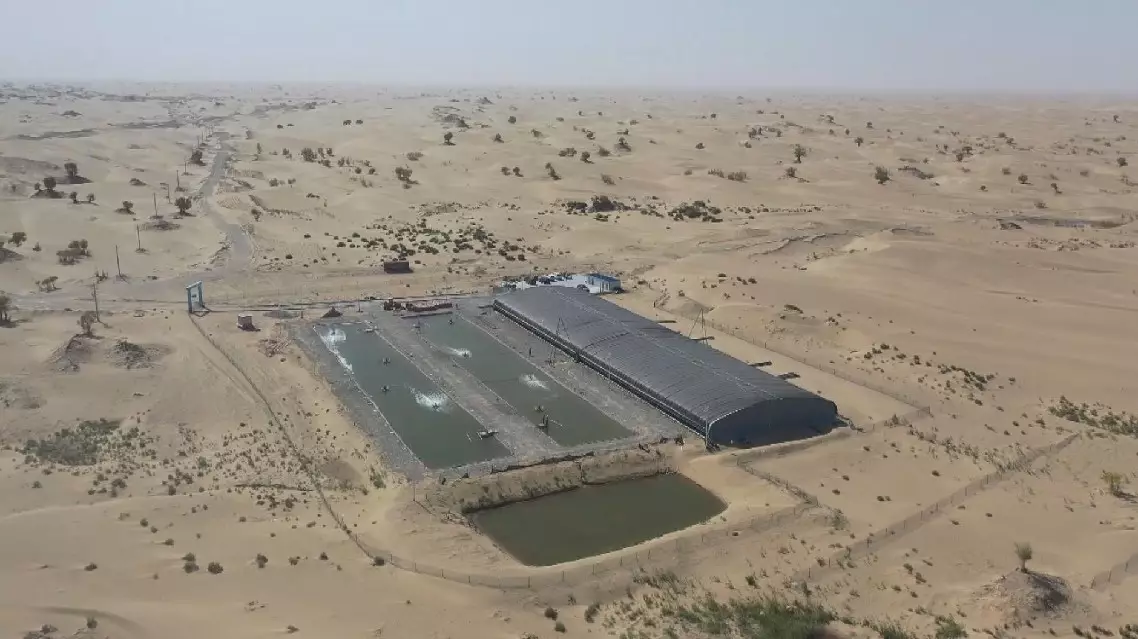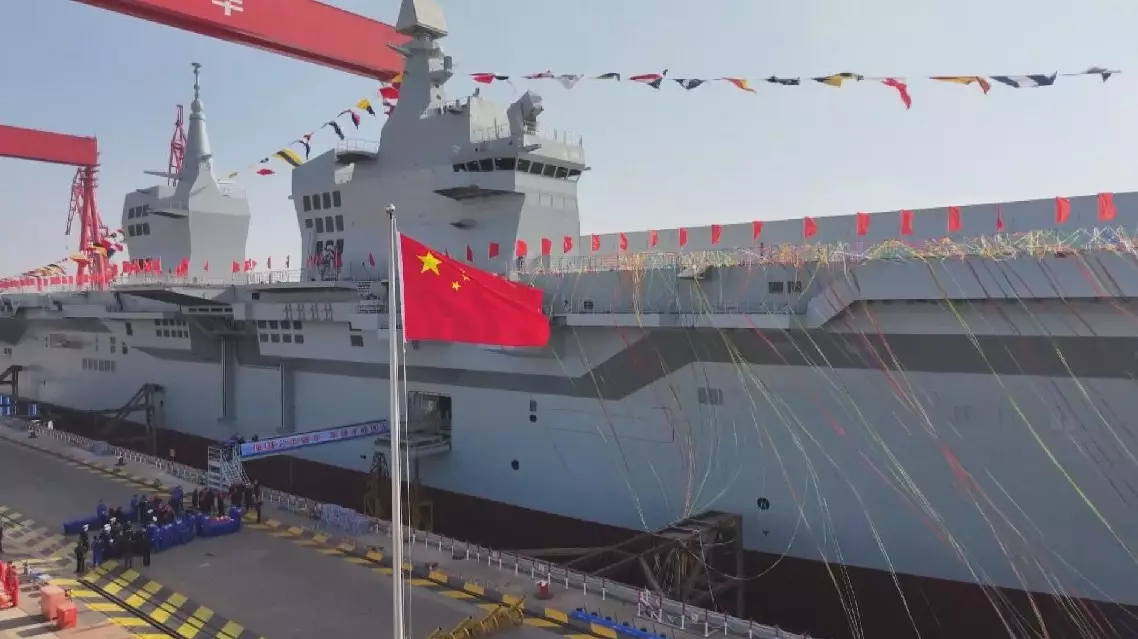An aquaculture base deep in the Taklamakan Desert of northwest China's Xinjiang Uygur Autonomous Region has achieved remarkable success in seafood farming, with various species such as pearl oysters, grouper, and seabass flourishing in the desert environment.
Located in Qiemo County, Bayingolin Mongolian Autonomous Prefecture, the facility utilizes advanced technology, including oxygenators and automated feeders, to maintain optimal conditions for marine fish growing in the ponds.
Covering approximately 1.3 hectares, the site includes two fish ponds, a breeding pool, and a seafood production workshop. It began operations in June after three months of construction.
The ponds currently host around 100,000 marine fish, including golden pomfret, grouper, and seabass, as well as two million pearl oyster seedlings and other aquatic species for trial farming.
"Our fish have grown from 3 centimeters to 8 or 9 centimeters, showing excellent growth. All of them are marine species. If things go on well, the first batch of fish will be market-ready in about four months," said Gong Yonghong, chairman of Shishixian Aquaculture Company.
Adapting to local conditions, the facility uses desert saline-alkaline water combined with specially produced microorganisms to replicate marine conditions, marking a significant innovation in aquaculture.
Specialized technicians at the base have been closely monitoring fish growth, adjusting farming strategies as needed, and maintaining a high survival rate through rigorous water quality testing and microbial treatment, ensuring the success of seafood farming in the desert.

Seafood farming thrives in Taklamakan Desert
China's first Type 076 new-generation amphibious assault ship has incorporated innovative technologies and superstructure, making it better equipped for far-seas and air-borne operations, according to a military expert.
The ship, named Sichuan after southwest China's Sichuan Province, was put into the water at a launch and naming ceremony in Shanghai on Friday.
The Sichuan features advanced electromagnetic catapult and arrestor technologies, enabling it to carry fixed-wing aircraft, helicopters and amphibious equipment.
It also has a full-load displacement of over 40,000 tons and boasts a dual-island superstructure along with a full-length flight deck.
With its innovative technologies and design, the ship is expected to significantly enhance the combat capabilities of the Chinese People's Liberation Army Navy in distant waters and aerial engagements, according to Du Wenlong, the expert.
"The Sichuan is the first to use the electromagnetic catapult technology, allowing for the vertical take-off and landing of fighters and drones, which require controllable thrust for launch. Should drones, including reconnaissance drones, be launched from the ship using the electromagnetic catapult technology, this amphibious assault ship will become the world's first unmanned aircraft carrier. This advancement would significantly enhance its strike range and effectiveness. As such, the ship is the only one worldwide able to make drones the core and main part of its carrier-based aviation. Therefore, from the perspective of comprehensive capabilities, the ship shows a significant improvement compared to traditional amphibious assault ships," Du said.
"The dual shipboard island structure makes it possible to divide the work of command. The shipboard island that supervises aviation can effectively coordinate drones, helicopters and fighter planes of allied vessels, thus avoiding chaos in the air. If each shipboard island operates independently and performs its own duties, it will significantly improve aviation and navigation capabilities. Especially in complex scenarios, each shipboard island will be able to address its own challenges by working independently, thus avoiding various adverse situations and elevating the overall combat capabilities at sea and in the air," he said.

China's next-gen amphibious assault ship better equipped for far-seas, air-borne operations: expert










